Introduction
This article provides an in-depth exploration of vacuum conveyors.
We will examine the following aspects in detail:
- Functions of Vacuum Conveyors
- Types of Vacuum Conveyors
- Applications and Advantages of Vacuum Conveyors
- And Much More...

Chapter 1: Understanding the Roles of Vacuum Conveyors
This chapter explores the purposes and functions of vacuum conveyors.
Defining a Vacuum Conveyor
Vacuum conveyors are machines that use suction created by air pressure to transport materials through enclosed pipelines. They are widely employed in various industrial and manufacturing processes.
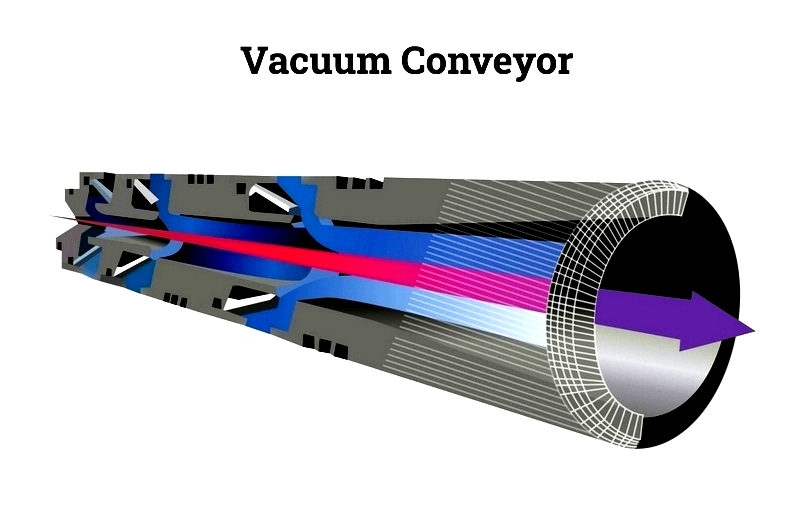
These conveyors utilize blower mechanisms to move materials more efficiently than traditional belt systems. They are particularly effective for handling diverse materials, including powdered chemicals and grains, in different quantities.
By creating a pressure differential through vacuum, materials are transported from one location to another. Negative pressure at inlets draws materials in, making vacuum conveyors especially suitable for bulk powders or dry materials that can be easily captured by airflow. Negative pressure is preferred over positive pressure as it reduces continuous dust accumulation.
Another significant advantage of negative pressure is minimized material loss, as any system leaks draw inward. This makes vacuum conveyors ideal for large-scale operations where materials are loaded from silos, bags, railcars, and other containers prone to debris. Additionally, they offer self-cleaning capabilities, energy efficiency, easy installation, and require less infrastructure compared to traditional conveyor systems.
Parts of a Vacuum Conveyor
A vacuum conveyor consists of several key components, including:
Vacuum Screener
Connected directly to a pneumatic transfer line, the vacuum screener filters materials through various mesh sizes. Its design is particularly suitable for pharmaceutical powders, food products, and chemical applications, effectively removing lumps and impurities. Its construction also simplifies cleaning and operation.
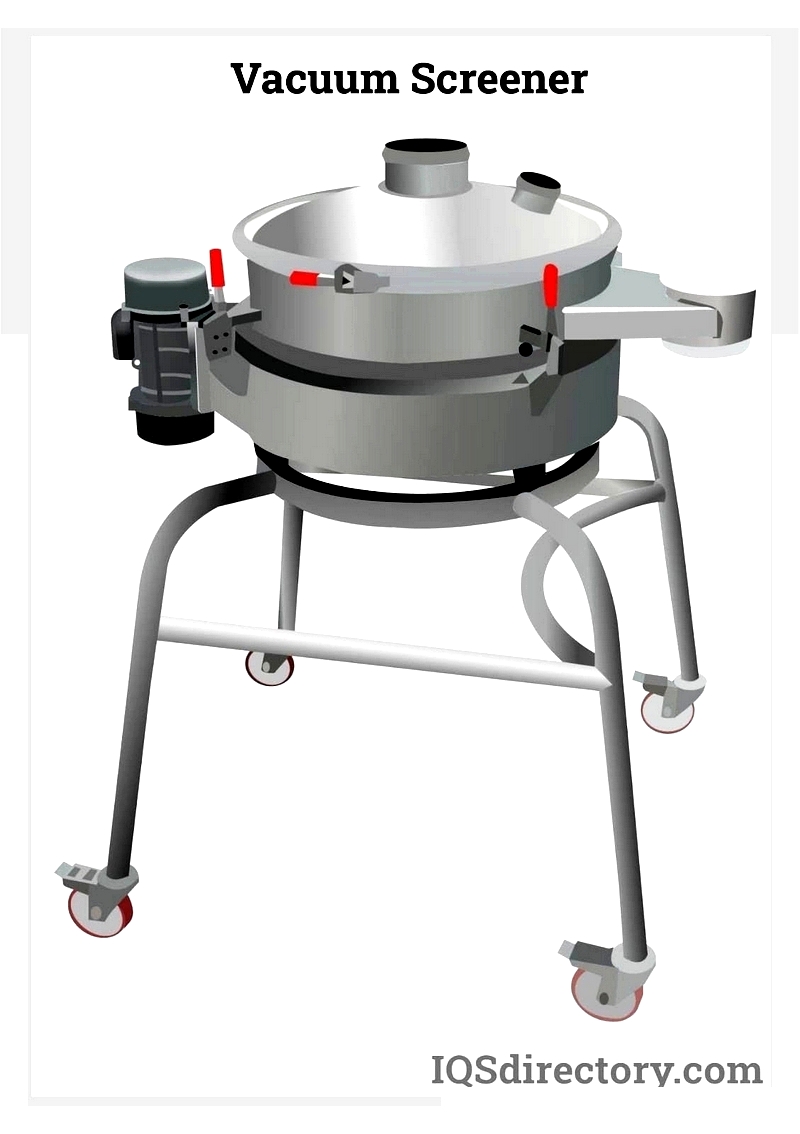
Vacuum Conveyor Batch System
This system is designed to transfer products directly from containers like gaylords, sacks, or drums into smaller units within the same facility. Most batch systems allow operators to manage the entire batching process efficiently with a single system, facilitating product distribution to different areas of the facility.

These systems typically include controls, vacuum conveyors, rotary valves, and integrated scales for precise dosing, simplifying material removal and loading during batch operations.
Vacuum Conveyor Lift
The lift is a column-based structure that supports the vacuum conveyor. Designed with casters, outriggers, and a counterweight base, it requires only a single air connection. Control components are compactly housed within the counterweight base.
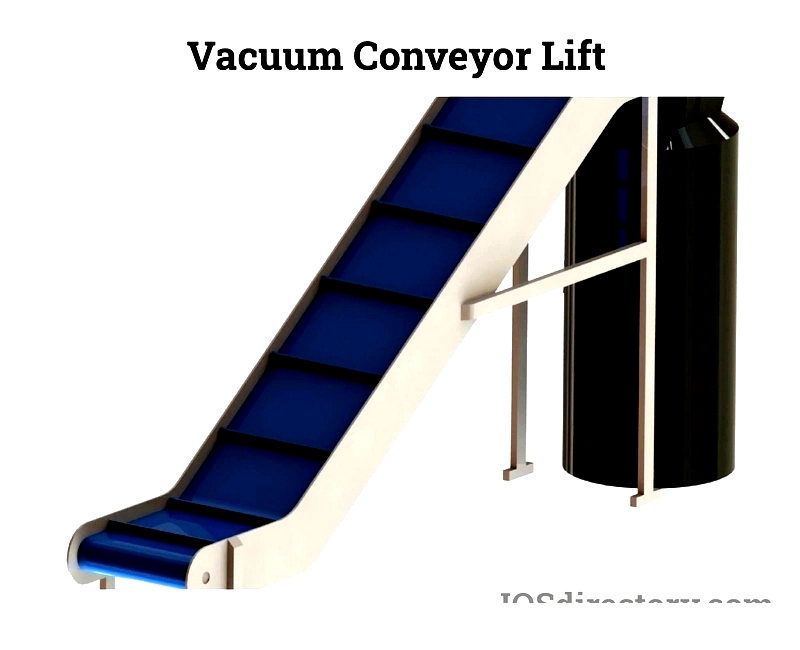
These lifts provide additional benefits, support diverse factory applications, and enhance conveyor operations. They often feature failsafe brake mechanisms that ensure secure operation during air loss, with a separate air cylinder to maintain brakes when plant air is unavailable.
Vacuum Pump
The vacuum pump is the core component of any vacuum conveyor, generating the necessary suction to transport materials from source to destination. Most vacuum systems use compressed air-driven pumps, valued for being maintenance-free, heat-free during operation, and easy to control. For complex powder transfer systems, powerful motor-driven pumps may be installed in separate plant locations.

Vacuum Conveyor Filters
When material-laden air enters the collection container, particle separation occurs as airspeed decreases. Clean air exits through the vacuum pump. Filters, which vary by application, are essential and can be made from materials like stainless steel, polyethylene, or polyester.
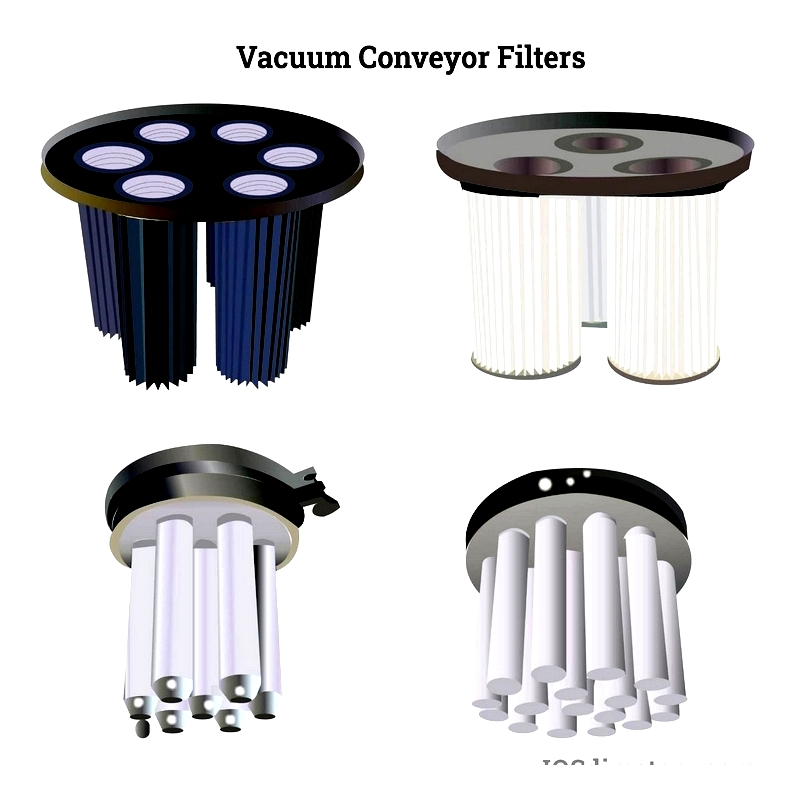
Vacuum Conveyor Feeder Valve
The collection container is equipped with a sanitary butterfly valve crucial for creating vacuum and product discharge. This valve may replace a discharge feeder in conveyor-integrated batch systems.
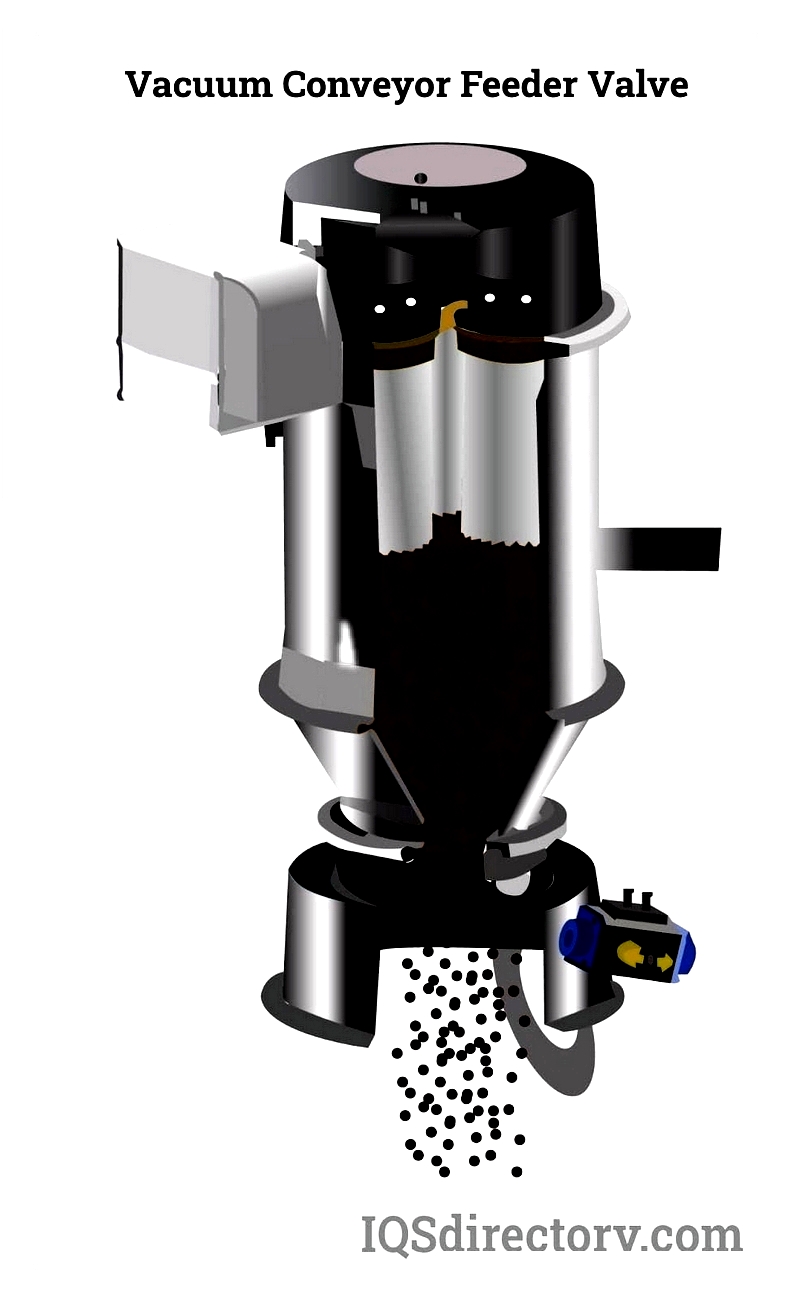
Vacuum Conveyor Control System
A customized control system is essential for pneumatic conveyors, ranging from fully electrical to fully pneumatic configurations. It may combine both to meet specific needs, often managing multiple independently controlled units.
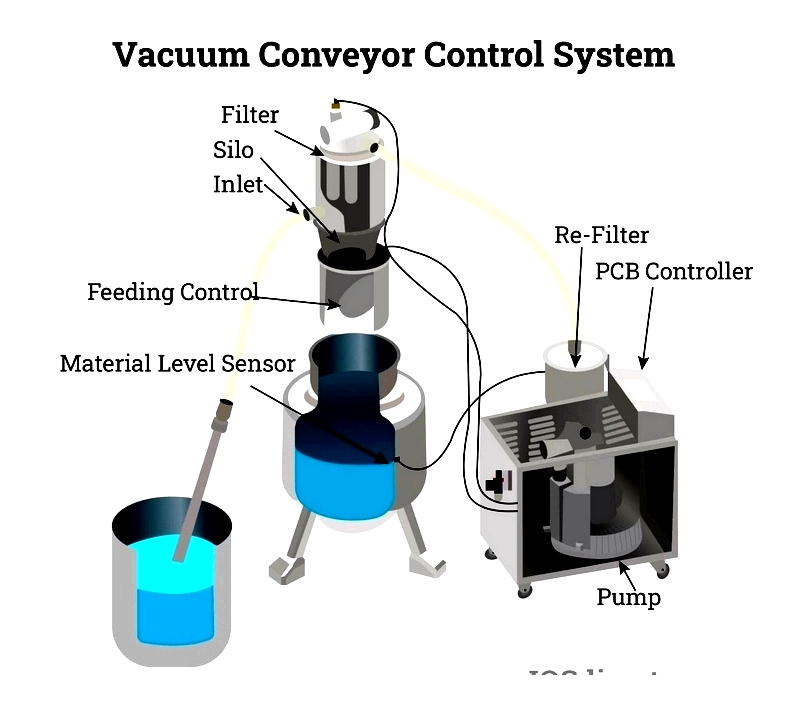
Vacuum Conveyor Vacuum Feed Wand
The feed wand is the optimal method for introducing materials into the vacuum system from containers like drums.
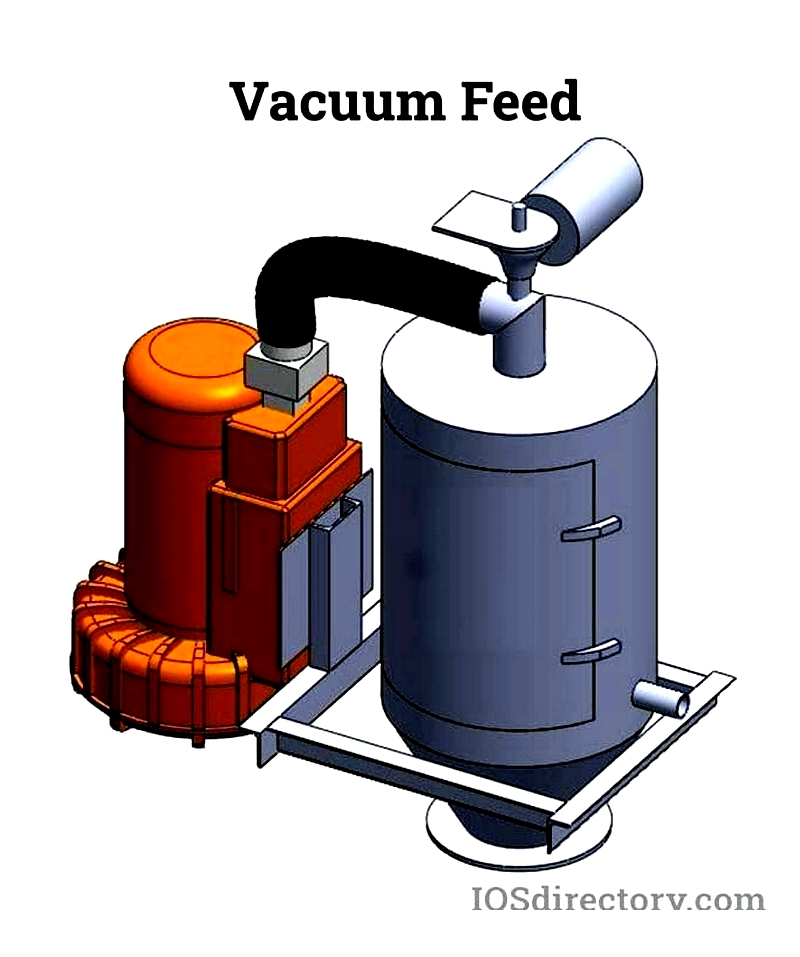
A feed lance holster may accompany the wand, along with a fabric drum cover featuring a clear window for easy viewing of contents.
Vacuum Conveyor Feed Station Hopper
Feed station hoppers serve as an alternative to feed wands and can be customized to meet specific product requirements, enabling automation and continuous feeding.
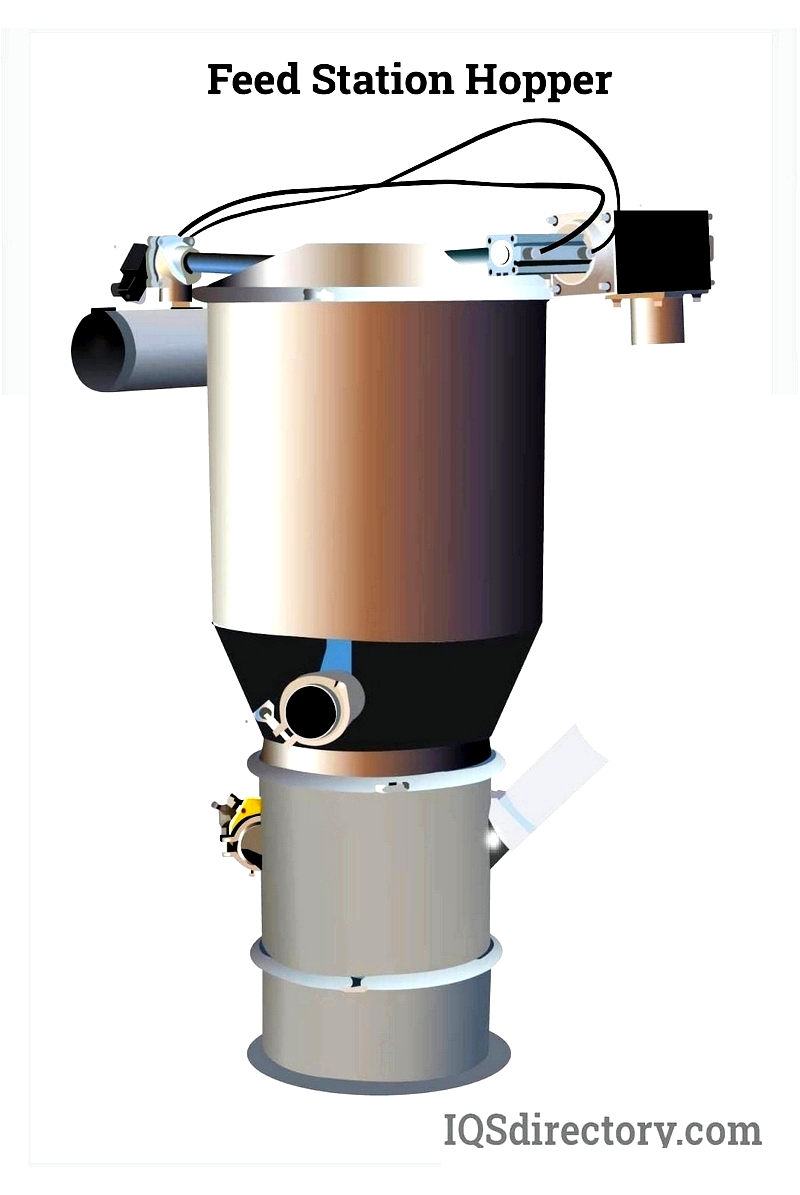
Enhancements like fluidizing discs and vibrations can improve material flow efficiency.
Operating Principles of Vacuum Conveyors
The vacuum conveyor process begins with the pump creating negative pressure in the separator container. This pressure draws air through a product feeding station, initiating material transport. Filters within the separator remove materials during collection, while cyclones optimize fine dust handling for increased flow rates.
Upon reaching capacity, the vacuum system equalizes pressure with external air before opening discharge valves. Materials flow to collecting vessels, aided by compressed air backflow for filter maintenance. Solutions like fluid-activated units or piston vibrators prevent blockages.
After discharge, the cycle repeats as the vacuum pump regenerates negative pressure.
Details on Vacuum Conveyor Specifications
As key components of automation, vacuum conveyors require appropriate equipment and careful consideration of the working environment, including factors like humidity, alkalinity, and temperature. Layout requirements and supplier specifications are vital for selecting the right conveyor.
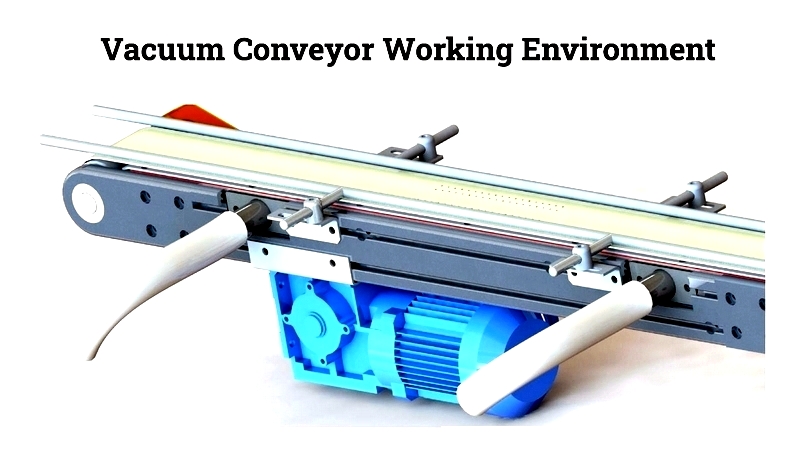
Applications of Vacuum Conveyors in Transporting Various Materials
Vacuum conveyors efficiently handle granulated substances, powders




